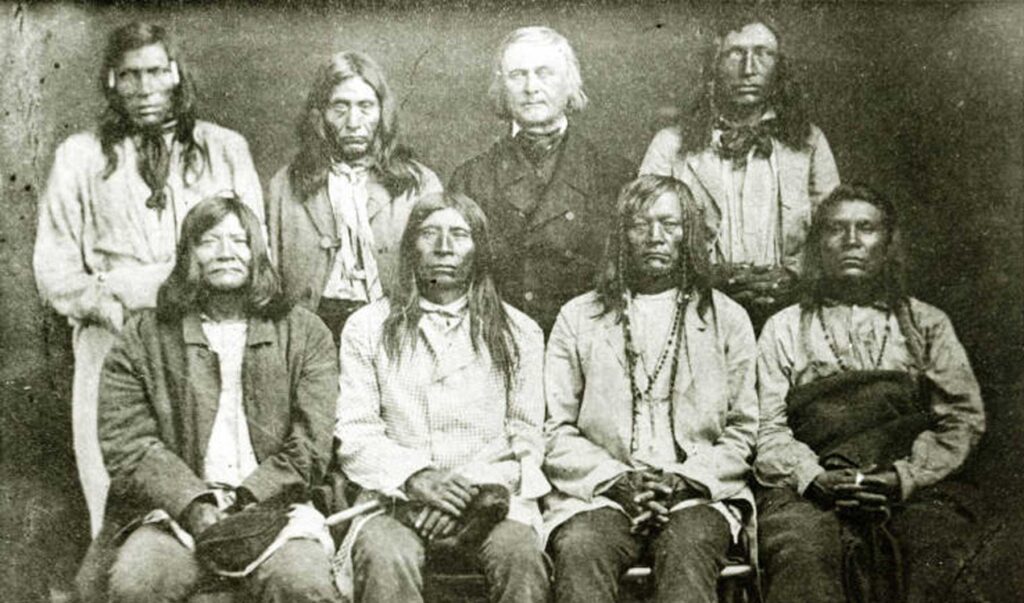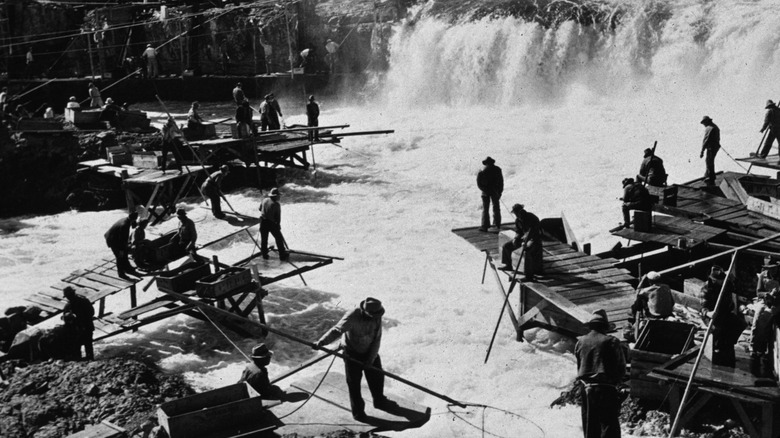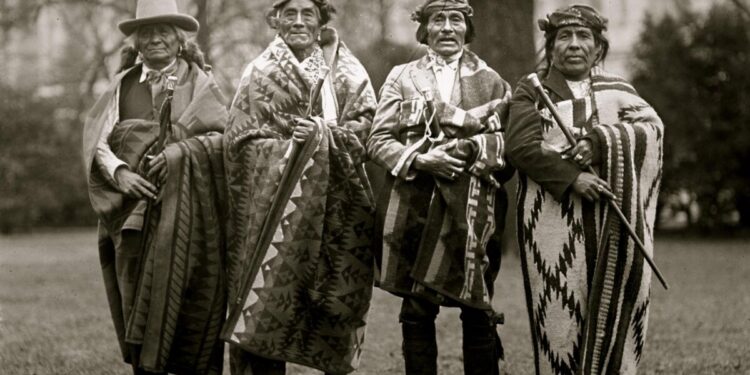Today marks Indigenous Peoples’ Day, a time to honor the first peoples of this land, the Native nations whose histories, cultures, and stewardship continue to shape Washington State and whose presence remains vital to its future.
Washington is home to 29 federally recognized tribes and several others that continue to seek recognition, representing thousands of years of continuous inhabitation, governance, and cultural development across diverse ecosystems, from the Salish Sea to the Columbia Plateau. These are not merely historical communities preserved in textbooks or museums. They are living nations with their own governments, legal systems, languages, and futures they are actively building.
Western Washington’s Coast Salish nations include the Duwamish, Suquamish, Snoqualmie, Puyallup, Tulalip, Nisqually, Lummi, Muckleshoot, Swinomish, and many others. These peoples developed sophisticated societies around salmon runs, cedar forests, and saltwater resources. Their languages, ceremonies, and governance systems were and remain deeply tied to the waters and mountains of Puget Sound and the Pacific Coast. The longhouses that once dotted the shorelines were not simply homes but centers of political life, where leaders gathered to make decisions that affected entire regions. The potlatch ceremonies, which colonial governments tried to ban, were complex systems of wealth redistribution, social cohesion, and cultural transmission that ensured no one in the community went without.

The Duwamish people, led today by Cecile Hansen, are the original inhabitants of the land now called Seattle. Despite their pivotal role in the city’s founding and Chief Si’ahl’s legacy, the man for whom Seattle is named, the Duwamish Tribe has fought for over a century for federal recognition. This is not a symbolic issue. Federal recognition grants tribes access to healthcare, housing assistance, educational programs, and the sovereign rights to govern their own communities and protect their cultural heritage. Without it, the Duwamish remain invisible in the eyes of the federal government, despite their continuous presence and the city’s reliance on their ancestral knowledge and territory.
The Snoqualmie Tribe, whose name you carry with you when you drive through Snoqualmie Pass or visit Snoqualmie Falls, regained federal recognition in 1999 after decades of advocacy. Their ancestral territory spans the Cascade foothills and Snoqualmie River watershed, lands central to their identity and spiritual practice. Snoqualmie Falls, known as the place where the first people were taught to live by the Creator, remains a sacred site. For the Snoqualmie people, the falls are not a tourist attraction or a hydroelectric resource. They are a living ancestor, a place of prayer and renewal.
East of the Cascades, the landscape and lifeways shift. The Spokane, Yakama, Colville, Nez Perce, and Umatilla nations are among those whose communities have thrived across the rivers, plateaus, and high deserts of Eastern Washington for millennia. Their economies were built around fishing, especially at Celilo Falls before its destruction by The Dalles Dam in 1957, root gathering, and seasonal migrations across vast territories. The flooding of Celilo Falls was not just an environmental tragedy. It was cultural genocide, the deliberate drowning of a place that had been a center of trade, ceremony, and sustenance for over ten thousand years. Elders who witnessed it described the event as watching their heart stop beating.

The Yakama Nation, one of the largest tribes in the Pacific Northwest, continues to assert treaty rights over fishing, hunting, and resource management across millions of acres. The Treaty of 1855 reserved these rights in perpetuity, yet the Yakama have had to fight in court again and again to protect salmon runs from dams, to prevent the dumping of nuclear waste on their lands, and to maintain access to traditional gathering sites now enclosed by private property or federal restrictions.
The Colville Confederated Tribes represent a coalition of twelve bands brought together on a reservation after the forced cessions and relocations of the 19th century. Today, they steward over a million acres and work to preserve languages, traditions, and ecological knowledge that predate the formation of Washington as a state. The coalition itself is a testament to resilience, different peoples with different languages and customs coming together not by choice but by necessity, and choosing to build a shared future rather than disappear.
Indigenous Peoples’ Day was created to replace the celebration of Columbus Day and to counter a narrative that frames 1492 as a discovery rather than the beginning of centuries of colonization, displacement, and erasure. For Native peoples, Columbus represents the arrival of disease that killed up to ninety percent of the population in some regions, violence that decimated entire communities, forced conversion that sought to destroy spiritual practices, and the systematic dismantling of their societies through laws that made it illegal to speak their languages, practice their religions, or govern themselves.
This day reminds us that the lands we live, work, and build on have always been Indigenous homelands and that their stories extend far beyond colonization. It is a day to center Native voices, acknowledge historical and ongoing injustices, and commit to supporting Indigenous sovereignty and self-determination. It is also a day to reckon with the fact that the wealth and infrastructure of Washington State were built on land taken through treaties that were immediately violated, on resources extracted without consent, and on labor systems that exploited Native people even as they were being told they were disappearing.
In Washington, this history is not distant. The treaties signed in the 1850s, including the Treaty of Point Elliott in 1855, were agreements between sovereign nations. The United States government promised tribes reserved lands, fishing and hunting rights, healthcare, and education in exchange for ceding millions of acres. Yet those treaties were systematically violated. Tribes were forced onto reservations a fraction of the size of their original territories, often on land deemed worthless by white settlers. Children were taken to boarding schools designed to kill the Indian and save the man, where they were beaten for speaking their languages and forbidden from practicing their cultures. Languages were banned. Ceremonies were outlawed. Fishing rights guaranteed by treaty were ignored for over a century until the Boldt Decision of 1974 reaffirmed tribal co-management of fisheries, a ruling so controversial that it sparked violent backlash from non-Native fishermen who burned tribal boats and hung effigies.
Indigenous Peoples’ Day is a corrective, a public acknowledgment that Native nations are not relics of the past, but living, thriving communities with legal rights, cultural richness, and political power. It is a rejection of the myth of the vanishing Indian, a narrative that served to justify the theft of land and resources by claiming that Native people were dying out anyway, so why not take what they had left. The truth is that Native people never vanished. They survived genocidal policies, forced assimilation, environmental destruction, and the deliberate erasure of their histories. And they did more than survive. They rebuilt their nations, revitalized their languages, reclaimed their cultural practices, and continue to lead movements for environmental justice, sovereignty, and human rights.
Across Seattle, Snoqualmie, Spokane, and beyond, local tribes and organizations are celebrating today through drumming, storytelling, art, canoe journeys, traditional foods, and community gatherings. These events reaffirm cultural pride and call for continued respect for treaty rights, environmental stewardship, and self-determination. In Seattle, the Duwamish Longhouse and Cultural Center hosts events year-round and serves as a gathering space for education and ceremony. The Burke Museum at the University of Washington, built in partnership with local tribes, houses one of the most significant collections of Coast Salish art and artifacts in the world and works to return sacred items to their rightful communities, acknowledging that many objects in museum collections were taken without permission or sold under duress.
Many tribes are also using this day to highlight ongoing struggles. The fight for federal recognition continues for tribes like the Duwamish, Chinook, and Snohomish. The protection of sacred sites remains urgent as development encroaches on burial grounds, ceremonial locations, and culturally significant landscapes. The defense of treaty fishing rights against development, pollution, and climate change grows more critical as salmon populations collapse and orca whales starve. And the crisis of Missing and Murdered Indigenous Women disproportionately impacts Native communities across the Pacific Northwest, a crisis rooted in the devaluation of Indigenous lives and the jurisdictional complexities that make it difficult to investigate crimes on or near reservations.
For Seattle residents, it’s essential to remember that our city sits on the ancestral lands of the Duwamish and Suquamish peoples, whose relationship with this region runs deeper than any skyline or street name. The Snoqualmie Pass you drove through today, that’s Snoqualmie land. The salmon in Pike Place Market, they return because of the stewardship practices tribes have upheld for thousands of years, practices that Western science is only now beginning to understand and respect. The rain that falls, the trees that tower, the waters that flow, all of these were managed, understood, and honored by Indigenous peoples long before the first European ships arrived.
But acknowledgment without action is hollow. True solidarity means supporting the Duwamish Tribe’s ongoing fight for federal recognition. It means honoring treaty rights, especially around fishing, water, and land use. It means learning whose land you’re on and the history of that place, not as a performative gesture but as a commitment to changing how we relate to this land and its original peoples. It means supporting Native-owned businesses and artists, amplifying Indigenous voices on climate justice because tribes are leading the way in ecological restoration and sustainable resource management, and advocating for the protection of sacred sites and the return of stolen land and artifacts.
Washington’s Indigenous peoples are not footnotes in history. They are leaders, artists, scientists, educators, and community builders shaping the future of this region. Indigenous Peoples’ Day is not just about the past. It’s about recognizing that future and ensuring it is built on respect, justice, and reciprocity. It’s about understanding that the land remembers, even when we forget, and that the original peoples of this place have never left and never will.







